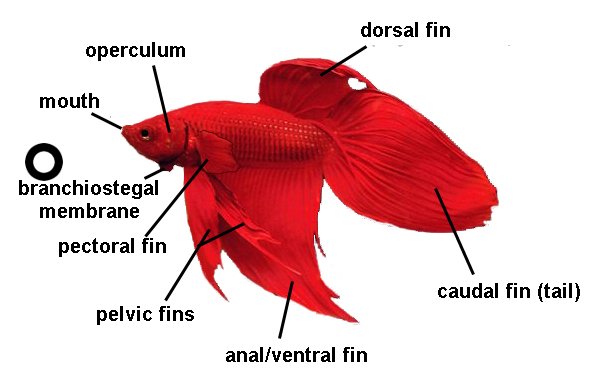
1. Dorsal Fin – Used primarily to stabilize the betta in the water and to aid in turning. Consists of many branches. One of three unpaired fins.
2. Caudal Fin – Often called the tail fin, the caudal fin is used for propulsion and is often the first fin to deteriorate when bettas experience fin rot. In rare cases, bettas may bite their own caudal fins causing fin loss. Bettas have been selectively bred to illustrate a variety of caudal fin shapes including halfmoon, double tail, delta tail and the common veil tail. One of three unpaired fins.
3. Anal Fin – Used for stabilization while swimming.One of three unpaired fins.
4. Pectoral Fins – Used for turning and propulsion. These paired fins are located just behind operculum.
5. Ventral Fins – Sometimes called pelvic fins, these are used for fine motor skills like sharp turning, ascending and descending in the water column and stopping.These are paired fins.
6. Operculum – The gill covers that protects the fragile gill tissue from injury or damage.
7. Caudal Peduncle – The area at the posterior end of the betta’s body just before the caudal fin begins.
8. Eye – Bettas have very good eyesight and can see in color. They often react to movement outside their tank or their own reflection.
9. Mouth – Bettas have an upturned mouth used positioned to fetch insect larvae and small insects from the water’s surface.
